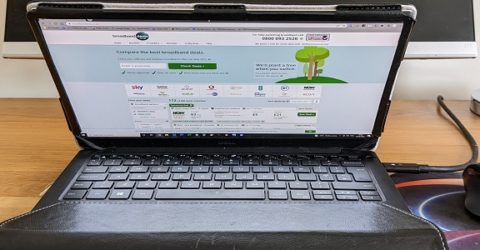How to choose a new laptop
When deciding how to choose a new laptop, you need to consider what the computer will be used for, where, and when

Whether you’re replacing an existing machine or going mobile for the first time, there’s plenty to consider when buying a new laptop.
These devices have evolved more rapidly than the desktop sector, benefiting from new technologies like solid state storage and detachable screens with tablet-style functionality.
Today, knowing how to choose a new laptop involves making more decisions than ever before.
To clarify this increasingly technical and diverse market, we consider key questions which ought to steer your search in specific directions.
What operating system should I choose?
This question frames any decision about how to choose a new laptop. With all due respect to Linux and its various distros, there are three main options:
Your choice will be influenced partly by cost – Chromebooks are among the most affordable with MacBooks generally the priciest – and partly by intended use cases.
Creative industries tend to favour Apple software and accessories, whereas corporate users are often drawn to Microsoft services like 365, OneDrive and Teams.
Apple invest heavily in selling directly to customers, whereas PCs and Chromebooks are sold in department stores, electronics retailers and supermarkets, among many other locations.
What screen size do I need?
While a screen isn’t the most complex part of a laptop, buying decisions often hinge on it.
Survey a row of modern laptops in an electronics store, and you’ll probably be instinctively drawn to the largest displays. Yet that may not be the most practical option.
Bigger screens mean bigger devices, with more weight and less battery life. A 13-inch screen could be optimal, even if a 15-inch display offers more aesthetic appeal.
Any decision about screen size will be influenced by many factors – your propensity to have multiple browser windows open at once, the need to maximise battery life, and so forth.
How many peripherals will the laptop be running?
As well as being a practical companion on the train or in a coffee shop, a laptop transforms into a fully-fledged desktop computer within seconds.
Modern laptops have limited ports and connectivity, especially wafer-thin machines like Microsoft’s Surface Pro. To connect multiple peripherals, you’ll need either:
a) A docking station, which effectively turns it into a desktop device with external monitors and speakers, Ethernet connectivity and various peripherals.
b) A splitter, which lacks the sophistication and separate power supply of a docking station, acting instead as a multi-port adaptor for your chosen device.
Most peripherals (keyboards and mice, printers and monitors) should connect via either a dock or a splitter, potentially meaning a new laptop only needs one USB port.
If you’d prefer to go old-school and connect peripherals directly to the computer, look for a blend of USB-A and USB-C ports, an Ethernet socket and an HDMI monitor port.
How powerful should its processor be?
This decision is complicated by the fact modern laptops may contain two processors – a central processing unit (CPU) and a graphics processing unit (GPU).
Different configurations of internal cores means they perform separate roles. A CPU juggles multiple apps and programs, while a GPU renders on-screen displays very efficiently.
In truth, there’s little to choose between processors from arch-rivals AMD and Intel. You might not even need a separate GPU unless you’re a regular game-player or media streamer.
How much storage should I specify?
Again, this depends how you’ll be using the device. Perhaps surprisingly, your home broadband speed plays a key role, as well.
If you have a sluggish internet connection, uploading data to cloud storage platforms like Microsoft’s OneDrive or Google Drive will be frustrating and time-consuming.
Look for 512GB hard drives or flash drive storage, since operating systems and bloatware (software pre-installed by the manufacturer) may consume hundreds of gigabytes of space.
For those with relatively fast broadband packages, cloud storage is a realistic option for many of your storage-hungry files like photos and media. If you’re looking to upgrade your connectivity speed, check the best broadband deals in your area by entering your postcode in the checker below!






